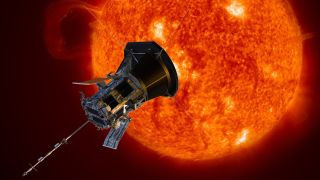If you’ve ever gazed at the moon and wondered, “How long would it take to fly there?”, you’re not alone. The journey to our celestial neighbor is a fascinating topic, and the answer isn’t as simple as you might think. The duration of a lunar voyage hinges on several factors, from the ever-changing positions of Earth and the moon to the specific technology propelling the spacecraft. Whether the goal is a lunar landing, an orbital mission, or a quick flyby drastically alters the travel time.
Generally, using today’s standard rocket technology, a trip to the moon averages around three days. However, history shows us that this can be significantly shorter or longer depending on the mission’s objectives and the spacecraft’s capabilities. Notably, NASA’s New Horizons probe, while on its way to Pluto, achieved the fastest lunar flyby, zipping past the moon in a mere 8 hours and 35 minutes. For crewed missions, Apollo 8 holds the record for the fastest journey to lunar orbit, arriving in just 69 hours and 8 minutes post-launch.
Let’s delve deeper into the factors influencing lunar travel time, explore the speeds of past moon missions, and understand why reaching the moon isn’t just a matter of point A to point B.
Understanding the Earth-Moon Distance
Before we can calculate travel time, it’s crucial to understand the distance to the moon. The average distance between Earth and the moon is approximately 238,855 miles (384,400 kilometers), according to NASA. However, this isn’t a fixed number. The moon’s orbit around Earth is not perfectly circular; it’s an ellipse. This means the distance varies throughout the month.
At its closest point to Earth, known as perigee, the moon is about 226,000 miles (363,300 km) away. Conversely, at its farthest point, apogee, the distance stretches to roughly 251,000 miles (405,500 km). This variance in distance is a key factor in planning lunar missions and calculating travel times.
Traveling to the Moon at Light Speed
To put the distances into perspective, let’s consider the speed of light, the fastest thing in the universe. Light travels at an astounding 186,282 miles per second (299,792 km per second). If we could travel at this speed, how long would it take to reach the moon?
- Closest point (Perigee): 1.2 seconds
- Farthest point (Apogee): 1.4 seconds
- Average distance: 1.3 seconds
While achieving light speed for space travel remains in the realm of science fiction, this comparison highlights the immense distances involved in space travel, even to our nearest celestial neighbor.
Lunar Travel Time with the Fastest Spacecraft
 Graphic illustration of NASA's Parker Solar Probe approaching the sun, set against the black expanse of space.
Graphic illustration of NASA's Parker Solar Probe approaching the sun, set against the black expanse of space.
Currently, the title of fastest spacecraft belongs to NASA’s Parker Solar Probe. Designed to study the sun, this probe has repeatedly broken its own speed records as it ventures closer to our star. In November 2021, during its tenth close solar flyby, it reached a staggering speed of 101 miles (163 kilometers) per second, or 364,621 mph (586,000 kph). NASA anticipates even greater speeds, projecting over 430,000 miles per hour (692,000 km/h) as it approaches within 4 million miles (6.2 million kilometers) of the sun’s surface in December 2024.
Hypothetically, if we could redirect the Parker Solar Probe on a direct path to the moon, traveling at its 10th flyby speed of 101 miles per second, the journey would take:
- Closest point (Perigee): 37.2 minutes
- Farthest point (Apogee): 41.4 minutes
- Average distance: 39.4 minutes
This theoretical calculation demonstrates that with extreme speeds, lunar travel could be remarkably swift. However, the Parker Solar Probe isn’t designed for lunar missions, and such speeds aren’t practical for missions requiring orbit or landing.
Driving to the Moon: A Humorous Analogy
 A person playfully sits in a red toy car against a gray wall, adorned with whimsical drawings of spaceships and planets.
A person playfully sits in a red toy car against a gray wall, adorned with whimsical drawings of spaceships and planets.
For a more relatable, albeit unrealistic, comparison, let’s imagine driving to the moon. If we could drive at a constant speed of 60 mph (96 km/h) to the moon’s average distance of 238,855 miles (384,400 km), the trip would take approximately 166 days. This whimsical analogy underscores the vastness of space and the significant speeds required for relatively quick lunar travel.
Expert Insights on Lunar Travel Time
To gain deeper insights into lunar travel times, we consulted Michael Khan, a Senior Mission Analyst at the European Space Agency (ESA). His expertise lies in orbital mechanics for interplanetary journeys, including missions to Mars.
Q&A with Michael Khan, ESA Senior Mission Analyst
How long does it typically take to get to the moon, and what factors influence this travel time?
Michael Khan explains that travel time is primarily dictated by the energy expended. In space travel, “energy” refers to the combined effort of the launch vehicle, spacecraft maneuvers, and propellant usage. Efficient spaceflight is essentially clever energy management.
Common lunar transfer methods include:
-
Hohmann Transfer: Often cited as the most energy-efficient transfer, especially for missions prioritizing short durations (a few days) and facing launch constraints. The Hohmann transfer to the moon typically takes around 5 days, with some variation due to the moon’s eccentric orbit and changing Earth-moon distances.
-
Free Return Transfer: Favored for crewed missions like the Apollo program due to its safety. While requiring more energy than Hohmann transfers, it’s designed to allow for a safe return to Earth even in case of propulsion system failure during lunar orbit insertion. Apollo missions using Free Return Transfers reached the moon in approximately 3 days.
Why are journeys to orbit or land on celestial bodies like Mars significantly longer compared to flyby missions?
Khan clarifies that orbiting or landing adds substantial complexity and constraints. Orbiters require significant propellant for orbit insertion, while landers necessitate robust heat shields to withstand atmospheric entry. These constraints limit arrival velocities, often leading to the adoption of Hohmann-like transfers, which inherently increase travel time.
The Complexities of Calculating Lunar Travel Time
Simple distance-over-speed calculations are insufficient for accurate lunar mission planning. These calculations assume a fixed Earth-moon distance and a straight-line trajectory. In reality, the moon’s elliptical orbit means the distance is constantly changing. Engineers must calculate trajectories based on the moon’s predicted position at the spacecraft’s arrival, not its position at launch. It’s akin to hitting a moving target while you are also moving.
Furthermore, mission objectives greatly influence travel time. Missions aiming for lunar orbit or landing require slower arrival speeds to execute orbit insertion maneuvers safely. Therefore, maximizing speed isn’t always the priority; controlled deceleration upon arrival is essential.
Historical Moon Mission Travel Times
Over 140 missions have been launched to the moon, each with unique objectives and travel durations. The iconic crewed Apollo 11 mission, which achieved the first human moon landing, took four days, six hours, and 45 minutes to reach the moon. Interestingly, Apollo 10 holds the record for the fastest human speed in space, reaching 24,791 mph (39,897 kph) relative to Earth during its return journey in May 1969.
More recently, the uncrewed Artemis 1 mission, the first flight test of NASA’s Orion spacecraft and Space Launch System rocket, reached the moon on its sixth day of flight. It performed a lunar flyby, passing just 80 miles (130 km) above the lunar surface to utilize a gravitational assist for entering a distant retrograde orbit.
Further Exploration
For deeper insights into space navigation and the crucial role of precise timekeeping, explore resources from NASA. To understand the remarkable navigation techniques used before GPS for lunar missions, refer to Gwendolyn Vines Gettliffe’s article on MIT’s ‘Ask an Engineer’ feature.
Bibliography
Hatfield, M. (2021). Space Dust Presents Opportunities, Challenges as Parker Solar Probe Speeds Back toward the Sun – Parker Solar Probe. [online] blogs.nasa.gov. Available at: https://blogs.nasa.gov/parkersolarprobe/2021/11/10/space-dust-presents-opportunities-challenges-as-parker-solar-probe-speeds-back-toward-the-sun/.
NASA (2011). Apollo 8. [online] NASA. Available at: https://www.nasa.gov/mission_pages/apollo/missions/apollo8.html.
www.rmg.co.uk. (n.d.). How many people have walked on the Moon? [online] Available at: https://www.rmg.co.uk/stories/topics/how-many-people-have-walked-on-moon.